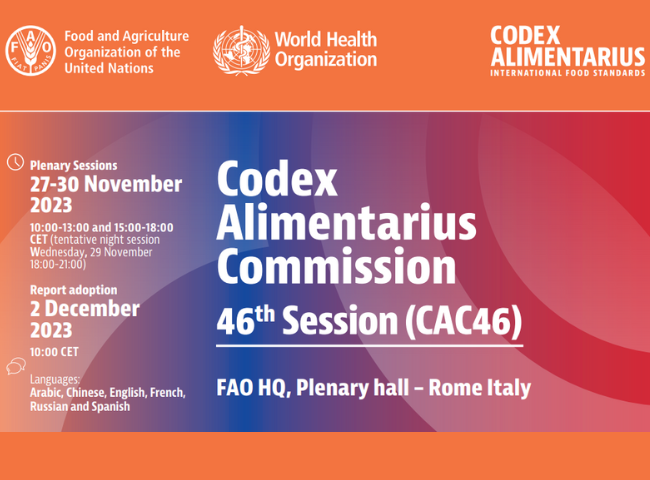WILL CODEX FINALLY ADOPT THE FOLLOW-ON FORMULA STANDARD? CAN CODEX REFORM TO MEET TODAY’S CHALLENGES?
12 November 2023 – BMA
_________
The 46th Session of the Codex Alimentarius Commission (CAC46) will be held physically at Food and Agriculture Organisation (FAO) headquarters, in Rome from 27 November to 2 December 2023. We will be attending this meeting to follow the adoption of the Follow-up Formula Standard and several other important issues. (Click here and Here for past blogs). Few people know of the existence of Codex or understand its impact, but the food industry never ignores it and dominates many of its meetings.
2023 is the 60th Anniversary of Codex, so under the Chairmanship of Steven Wearne, Codex is consulting on its Strategic Plan for 2026-2031 and will consider whether it can support “the broader global goals around sustainability, one health, food security and environmental protection”, how it prioritizes its work and a process for revising, revoking or starting standards. The absence of such analyses in 1987, led to the adoption of the disastrous Follow-up Formula Standard – a standard that fuelled the global market for these unnecessary and harmful products.(2)
ENCA/IBFAN comments on the Follow Up Milk standard.
IBFAN ENCA comments on PART 1 of the Codex Strategic Plan 2026-2031.
IBFANENCA comments on Part 3 future of Codex.
ENCA/IBFAN comments on Technology Labelling.
ENCA and IBFAN are calling for extra safeguards on the Guidelines on information on Pre-Packaged foods VIA E-COMMERCE before ADOPTION AT STEP 5.
ENCA and IBFAN consider the General Standard for Allergen labelling to be ready for adoption at step 5
ENCA and IBFAN believe that the 1981 standard for canned baby foods is out of date, not fit for purpose and should be revoked. Any amendment is likely to give the false impression that the standard is up-to-date.
Page further down for an explanation of why Codex is so important for IBFAN and the welcome address from Dr Tedros Adhanom Ghebreyesus, WHO Director-General to last year’s CAC45.

CAC46
27th November – 2nd December
FAO, Rome, Italy
Revised Standard for follow-up formula CL 2023/68/OCS – CAC
Request for comments at Step 5/8 and Step 8 – due 15th October 2023.
Comments from countries and Observers
After 10 years of tortured discussions in a Nutrition Committee (CCNFSDU) dominated by food corporations and powerful exporting countries, the revision of the 1987 Codex Standard for Follow-Up Formula was finalised in March with the addition of all important references to the International Code of Marketing of Breastmilk Substitutes and subsequent WHA Resolutions (the International Code). The revised Standard presented for final adoption at CAC has improved the ingredients (the 1987 standard set no upper limits for added sugars!) and banned health and nutrition claims. However unresolved problems remain that increase the risks of these unnecessary ultra-processed products:
- Two secondary names are permitted that contain the misleading and highly promotional claim “with added nutrients’;
- the text of the Preamble should more clearly require compliance with the Code and WHA Resolutions.
- the measurement of sweetness of these products is unresolved;
- Genetically modified ingredients are not prohibited;
- Flavours are permitted for the Drinks for Young Children
- the is no specific prohibition of Cross Promotion
- There are no preparation instructions for powdered products clearly stating that the product is not sterile and must be reconstituted with safe water at 70 degrees centigrade
PROPOSED DRAFT GUIDELINES ON THE USE OF TECHNOLOGY TO PROVIDE FOOD INFORMATION. IN FOOD LABELLING (FOR ADOPTION AT STEP 5)
ENCA/IBFAN comments on Technology Labelling
ENCA and IBFAN consider that the Guidelines are not ready for adoption and must include additional principles and text to safeguard child health and privacy and prevent harmful commercial use of technology.
Nutrition and health claims must not be permitted for foods for infants and young children. Health warnings about inappropriate and needless use, and safe preparation of the product must be communicated in any information using technology. Food information described or presented using technology shall be truthful. Reference must be made to the Code of Ethics for International Trade in Food including Concessional and Food Aid Transactions (CXC 20-1979) in order to safeguard the marketing of foods for infants and young children and ensure that all labelling conforms to the International Code of Marketing of Breastmilk Substitutes and subsequent relevant WHA resolutions 2 Electronic labelling relating to foods for infants and young children should not lead consumers to commercial websites and other commercial and promotional information. 3 A new principle must be included clarifying that no user data should be collected or tracked through electronic means. 4 Food information must be presented separately from commercial information as follows: “Food information described or presented using technology shall be presented in one place, separately from other commercial information intended for sale or marketing purposes.”
Codex members and observers are invited to submit comments on MLs for contaminants in foods as follows: 1. Lead in soft brown, raw, and non-centrifugal sugars, and in ready-to-eat meals for infants and young children …….For background information, please see CL 2023/76/OCS-CAC. RUF for IYC
REVISION OF GENERAL STANDARD FOR THE LABELLING OF PRE-PACKAGED FOODS (CXS 1-1985) RELEVANT TO Allergen labelling. (FOR ADOPTION AT STEP 5).
IBFAN and ENCA agree that the Proposed Draft Revision of the General Standard for the Labelling of Pre-packaged Foods (CXS belling 1-1985): Provisions Relevant to Allergen Labelling is ready for adoption at Step 5.
PROPOSED AMENDMENT TO THE STANDARD FOR CANNED BABY FOODS (CXS 73-1981). Canned Baby Foods
ENCA and IBFAN believe that this standard is out of date, not fit for purpose and should be revoked. Any amendment is likely to give the false impression that the standard is up-to-date.
PROPOSED DRAFT GUIDELINES ON THE PROVISION OF FOOD INFORMATION FOR. PRE-PACKAGED FOODS OFFERED VIA E-COMMERCE. (FOR ADOPTION AT STEP 5)
ENCA and IBFAN recommend the addition of safeguards in these Guidelines before adoption at Step 5 to ensure conformity with the International Code of Marketing of Breastmilk Substitutes and subsequent WHA resolutions.
Zilpaterol CL 2023/33/OCS-CAC. Codex Members and Observers are invited to submit comments at Step 6 on all aspects of the draft MRLs for zilpaterol hydrochloride in cattle liver, kidney and muscle, including possible implications of the draft standard for their economic interests.
Other topics. NRVs 6-36m Remote audit inspection Codex PManual
Comment on the development of the Codex Strategic Plan 2026-2031 – Part 1 – how Codex works as part of the multilateral system on food and trade CL2023/65/OCSEXEC
Members and Observers are invited to provide responses to the following questions, which are based on Annex I: Codex standards, put in place for food safety, quality, and nutrition, may also contribute to other areas. In your view, how could Codex support “the broader global goals around sustainability, one health, food security and environmental protection through the development of international food standards that address any potential issues for consumer health protection or fair trade practices arising from implementation of initiatives to advance sustainability interests“? Where do you see particular priorities for Codex?
The Quadripartite One Health Joint Plan of Action focuses on supporting and expanding capacities in six areas, including the assessment, management and communication of food safety risks. It also promotes multinational, multi-sector, multidisciplinary collaboration. What benefits might there be to Codex and its Members from such collaboration across the multilateral system for trade and food?
IBFAN and ENCA comments on PART 1 of the Codex Strategic Plan 2026-2031
ENCA Comments stage 3 Future of Codex CL 2023/82/OCS-EXEC E
ENCA and IBFAN propose the 4th option in Table 1 – in person and virtual participation alongside web-streaming. ENCA also proposes several further safeguards on Conflicts of Interest, Transparency, resource imbalance, One Health and Report writing.
BACKGROUND
- CCEXEC84 considered the draft blueprint for the Future of Codex that had been developed by the relevant CCEXEC sub-committee. The draft blueprint was developed based on the inputs received via post meeting surveys and informal consultations primarily involving the Chairpersons of Committees, Host Secretariats, Regional Coordinators and Working Group Chairs. Discussions in both CCEXEC and CAC had acknowledged the importance of seeking input form the broader Codex Membership on this Blueprint.REQUEST FOR COMMENTS
- CCEXEC84 agreed that the section (Section 2) of the draft blueprint on the future of Codex that relates to context and drivers should form the basis for discussion of the narrative on drivers for change in the development of a Strategic Plan 2026-2031. Members feedback have already been sought on this through Circular Letter CL 2023/65/OCS-EXEC. In order to seek feedback on Section 3 – Model for future Codex work, an informal side event open to all members present was convened in the margins of CCGP33 on 4 October 2023. This Circular Letter now provides an opportunity to all Members and Observers to provide their feedback on Section 3 of the Blueprint (see Annex I).
- CCEXEC84 proposed that in seeking input from the wider Codex membership, there should be specific questions addressing the strengths and weaknesses of different meeting formats depending on the complexity of the issues to be discussed; how the meeting formats compared in terms of resource and time costs; and whether any of the meeting formats were better or worse from Member/Observer perspectives in demonstrating the Codex core values of inclusivity, collaboration, consensus-building, and transparency. To this end in addition to providing feedback on the text itself, Members and Observers are requested to address the following questions:
- a) With regard to the four meeting formats presented in Table 1, are there any additional strengths or weaknesses of the meeting formats that should be highlighted?
- b) From your perspective as a Member country or Observer is there a particular meeting format that is most effective in terms of time, cost and efficiency? Please provide the rationale for your answer noting that more than one option may be selected. Please also indicate the resource implications for you with regards with the four meeting formats, i.e. in-person only, virtual only, in-person with webcast, in- person with possibility of virtual interventions.
- c) Are the core values of Codex, transparency, inclusiveness, collaboration, and consensus-building guaranteed by the four meeting formats described? Do you have any concerns that would need to be addressed with regard to using a particular format for a Codex meeting?
- d) Are there other meeting formats that should be considered?
- e) How can we continue to improve inter-session working mechanisms to ensure they provide a good basis for the work of Codex committee meetings?
- f) Are there other key issues that need to be considered in developing the model for Codex work that will ensure its efficiency and effectiveness in the coming years?
https://ocs.codexalimentarius.org/main/default.aspx
What is Codex and why does IBFAN attend?
Codex is a joint United Nations body created in 1963 by the World Health Organisation (WHO) and the FAO to develop food standards, guidelines and codes of practice under the Joint FAO/WHO Food Standards Programme. IBFAN has been attending Codex meetings since 1995 when the World Trade Organisation (WTO) was established and was mandated to refer to Codex Standards in trade disputes. This had an important and damaging influence on the protection of breastfeeding and child health. The lack of transparency and poor conflict of interest safeguards, coupled with the dominance of food corporations and powerful exporting nations, led to Codex adopting weak standards for many harmful foods and commodities. These standards have been regularly used in attempts to stop governments bringing in strong marketing controls. Indeed between 1995 and 2019, there were 245 interventions made in the WTO concerning commercial milk formula marketing, labelling or safety testing regulations of another member state, wrongly treating Codex standards as a ‘regulatory ceiling’ for trade purposes. (1) In fact, governments have the sovereign right to adopt any legislation they consider necessary to protect child health as long as it does not violate international trade principles,
Largely because of IBFAN’s consistent advocacy at Codex, the standards on foods for infants and young children adopted after 1995, all refer in some way to the International Code, the Global Strategy and/or the subsequent WHA Resolutions on infant and young child feeding and the Codex Code of Ethics for International Trade continues to require Member States to “…make sure that the international code of marketing of breast milk substitutes and relevant resolutions of the World Health Assembly (WHA) setting forth principles for the protection and promotion of breastfeeding be observed.”
NOTES(1) 2023 Lancet Breastfeeding Series. Paper 3. INTERVENTIONS AT WTO AND CODEX RELATED TO NATIONAL IMPLEMENTATION OF THE WHO INTERNATIONAL CODE OF MARKETING OF BREASTMILK SUBSTITUTES. Katheryn Russ*(2)Follow-up formulas were deliberately invented by the baby food industry to get round the marketing recommendations of the 1981 International Code. The adoption of the 1987 Follow Up Formula Standard legitimised these problematic products and undermined government efforts to ban the marketing of these products (the standard claimed that follow-up formulas were not breastmilk substitutes). This boosted the growth of a $ multi-billion market that has fuelled the obesity epidemic and added to the environmental burden. When this new work was started in 2012/13, IBFAN proposed that the standard should be ‘revoked’ rather than updated.(2) COP27 – Can lessons be learned and the UPF trade controlled? IBFAN Statement. November 2022. The food sector is known as a major source of anthrop3ogenic greenhouse gas emissions, contributing about 30% of the total global emissions, through livestock, fisheries, crop production, land-use changes and processing1. Writing in this issue of Nature Climate Change, Ivanovich et al. further confirm in their Analysis article that global food consumption can add nearly 1 °C to warming by the end of this century, driven by foods that are high sources of methane, such as beef, dairy and rice..Modern food emissions. Nat. Clim. Chang. (2023). https://doi.org/10.1038/s41558-023-01643-2


